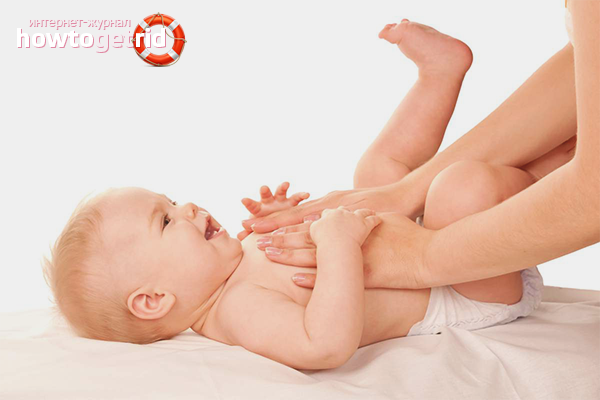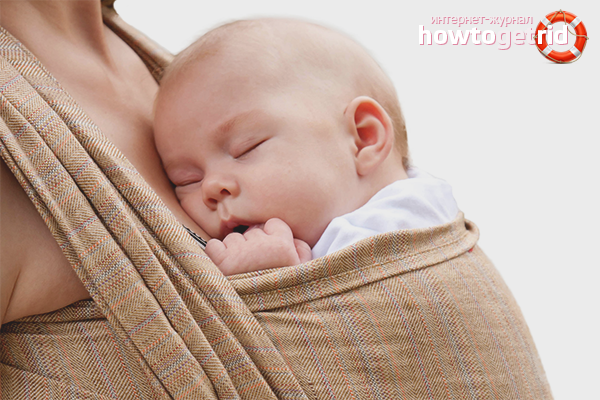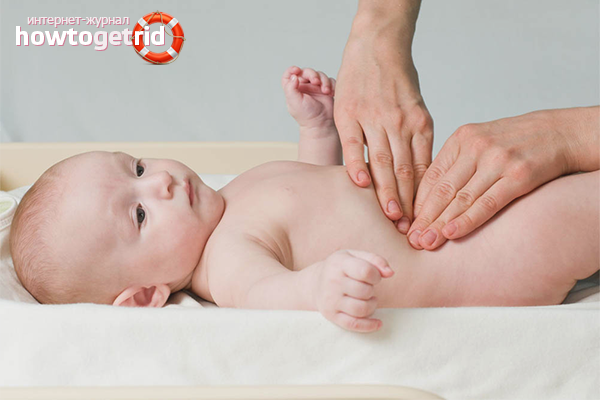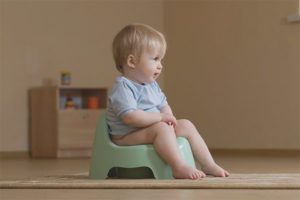The content of the article
The digestive tract of a child who has recently been born is completely sterile. In the first year of life, the intestines are populated with “good” microbes. They actively multiply, causing bloating and increased gas formation. Pediatricians consider colic a natural process that does not require medical treatment. And in order to facilitate the well-being of the baby, mother is recommended to use non-traditional methods.
Diet for colic
The body of the newborn in the first 3-4 months is very sensitive. Just one product, which a nursing woman decided to treat herself to, can provoke another attack of flatulence. Until the baby is 4-6 months old, mother is advised not to use:
- whole milk;
- cucumbers
- beans and peas;
- carbonated drinks;
- white cabbage;
- raisins and grapes;
- pears
- bell pepper.
Zucchini and carrots, cauliflower and prunes are useful. Sour-milk products are recommended for lactating women, whose intestinal microflora are disturbed due to pregnancy: natural yogurt, cottage cheese, fermented baked milk, hard cheese and kefir. The mother's body will share the digestive enzymes with the newborn, and colic in the baby will appear less often.
Babies who are breast-fed, with flatulence, are given both conventional and sour-milk mixtures. Combined nutrition helps the intestines of the baby develop enzymes for digesting food. Peristalsis improves, and gases practically do not bother the baby.
A child should receive boiled water in addition to breast milk or a mixture. At the age of 4–6 months, infants are given weak chamomile tea, which soothes and relieves spasms. But such drinks are contraindicated for some crumbs, because from them the child has an allergy or flatulence increases.
With dehydration or a lack of fluid, digestive processes slow down, and it becomes more difficult for the intestines to process milk. Food stagnates and wanders, gas bubbles form, and the stomach in the newborn swells and begins to hurt. First, infants are given a tablespoon of boiled water. Gradually, the amount of fluid increases.
It is also useful for mom to drink still water and herbal decoctions if the newborn has no allergies to them.
Heat from colic
The baby is crying because of stomach cramps. Breasts that are younger than 3 months old are not recommended to give medicine, dill water or put candles. Medications are replaced by warming the intestines with warm diapers or towels.
High temperatures increase blood flow to the stomach, improving the functioning of the digestive organs. Heat removes spasms and promotes the release of gases. How to warm a diaper? Fold in several layers and iron with a hot iron. Attach tissue to the inside of the hand: if the skin is warm and pleasant, you can cover the neonatal tummy with a diaper. Remains a red trace and nips? Cool the fabric a little, and then apply, otherwise you can burn the delicate skin of the baby.
In winter, a terry towel or diaper is heated on batteries. Put a dry compress on the heater, leave for 10-15 minutes. When the tissue becomes warm enough, remove and put on the intestinal area.
The only drawback of the diaper compress is that it cools quickly. Mom has to constantly warm up the fabric, so neither she nor the child can not rest and sleep.
An alternative to a diaper is a heating pad, which is not filled with water, but with salt or sand. Dry matter is heated in a pan, in the oven or in the microwave.They fall asleep in a rubber shell and apply it to the stomach of the newborn, wrapping a terry towel.
There are special warmers for babies with woolen covers. Manufacturers use cherry stones or barley husk as a filler. The material retains heat for a long time and is suitable even for babies with sensitive skin or a tendency to allergies. Warmers for newborns are heated in the microwave.
The stomach of the baby with flatulence is covered with a pillow or terry bathrobe. Plus: such a compress retains heat for a long time, so newborns do not wake up in the middle of the night from another bout of spasms. Minus: it is difficult for a child who has intestinal pain to lie in one place and wait until the pillow heats up to a comfortable temperature.
Mom is the best sedative
Colic occurs due to increased gas formation. To remove cramps and pain, the baby is stripped, leaving only a diaper, and applied to his mom or dad with his stomach. The head of the newborn is placed on the right hand, and the upper and lower limbs are tried to spread as much as possible to the sides. The baby is stroked on the back and gently swayed to calm.
When a child presses his stomach against his mother’s body, his intestines contract, and the gases go out. The cramps disappear, and the baby, lulled by warmth and a familiar smell, calms down and quickly falls asleep.
You can apply a newborn to my mother’s or father’s belly at night, when the parents do not have enough strength for motion sickness and charging. If the method does not work, it is recommended to gently stretch the intestines of the baby with gentle movements. Pressing lightly, massage clockwise, and then several times hold your fingers from the stomach to the navel and slightly lower. Circular movements will relax the muscles and intestines, and the stomach will clear itself of gas.
Restless babies who do not want to lie on their mother are advised to rock motion in an asterisk pose. Put the head on the elbow, the tummy on the forearm, and let the baby's arms and legs hang down on the sides. Hold the back of the newborn so that it does not fall, and carefully swing it, singing a song or talking in a half-whisper with the child.
It is difficult for mothers tired of hysterics and screams of a baby to remain calm, but the baby should not be scolded for colic or use physical force on him. Punishment only worsens the emotional well-being of the newborn, he is more nervous, and the cramping intensifies. A woman should give her baby to dad or put him in a crib, go out to another room for a few minutes, and when irritation and anger subside, return to the baby. The calmer the mother, the faster the baby will stop crying and fall asleep.
Colic exercises
It is useful to do exercises with newborns. Exercise stimulates intestinal motility, preventing the formation of gases. But you should deal with your child before meals, when he is not worried about colic and cramping.
- To undress the baby and put the back on a changing table or other hard surface.
- To stroke a newborn’s tummy with a palm bent in the shape of a bucket. Move from the esophagus to the navel, slightly pressing.
- Massage the tummy with one hand, and raise the legs with the other to facilitate the release of gases. Repeat the movement 4-6 times, give the baby a little rest.
- Lower your legs and straighten, for 5-10 seconds, stroke the hips to relax the muscles.
- Connect the knees and slowly lift to the navel. Heel slightly dilute to the sides.
- Count 10 seconds, carefully return to the starting position.
- Extend your legs and rub them with light movements to disperse the blood and help the baby relax.
- With index fingers, draw a circle around the navel. One hand should move clockwise and the other in the opposite direction. Repeat exercise 5-6 times.
Thanks to charging, the tummy relaxed, now you need to stroke the baby's legs and arms to relieve tension in the muscles.If you repeat charging 3-4 times a day, then the child will sleep more calmly, because the gases will go out, and not accumulate in the intestines.
At the next attack of flatulence, the baby is recommended to be placed in the stomach on a fitness ball, which is covered with a heated sheet. Toddler roll up and down or left and right. The direction is selected individually, depending on the reaction of the child and his intestines.
A child who turns red and pushes should be laid with his back on the table and raise his legs, and then gently press them to the tummy. Repeat 4–5 times until the exhaust gases begin. For colic, the Bicycle exercise helps. The lower limbs of the newborn are raised and bent at the knees, imitating a two-wheeled vehicle.
If heat and physical activity were not enough, the child is given medications or homeopathic medicines.
Folk and pharmacy funds
Colic will pass if you give the baby a decoction of dill or carrot seeds. The drink has a carminative effect and eliminates cramping. Infusion of yarrow or fennel, tea from dried chamomile will relieve flatulence.
Give your child no more than 10 ml of a homeopathic remedy at a time. If a rash appears after the decoction, the newborn is allergic to the plant component. We'll have to treat colic with medications.
Ventilation tubes are also sold in pharmacies that help cleanse the intestines of feces and excess air, but not all children can tolerate such a procedure. A humane way to get rid of colic is with a cotton swab dipped in massage or plain vegetable oil. The tip is inserted between the buttocks and lubricated by the ass. Oil acts as a laxative and carminative.
For colic, newborns are prescribed:
- Bifidum;
- Plantex;
- Baby Calm
- Espumisan
- herbal teas with fennel;
- pharmacy dill water.
Colic in newborns disappears at 5–6 months of age. If no methods and drugs help with flatulence, mother can only endure this period. The intestines of the baby will learn how to produce enzymes and digest milk, the gases will cease to accumulate and disturb the baby, and the baby will sleep soundly all night.
Video: how to help a child with colic













Submit